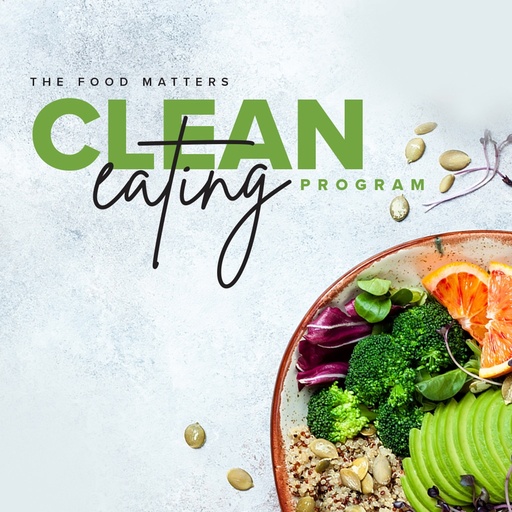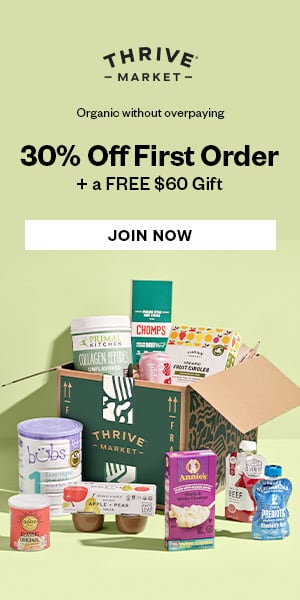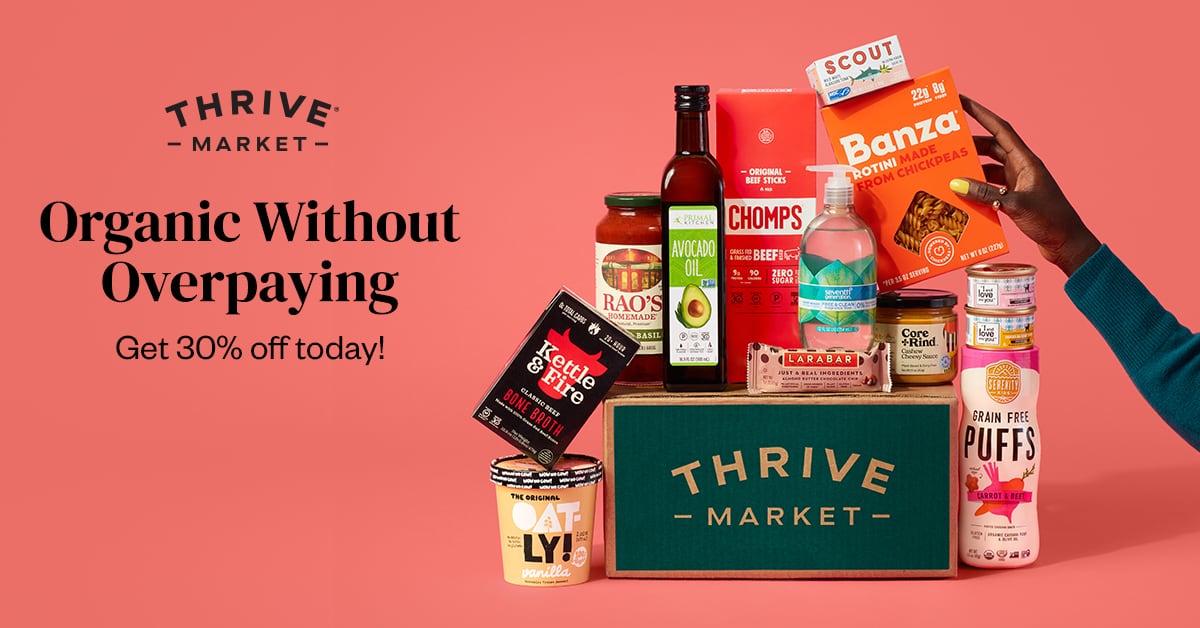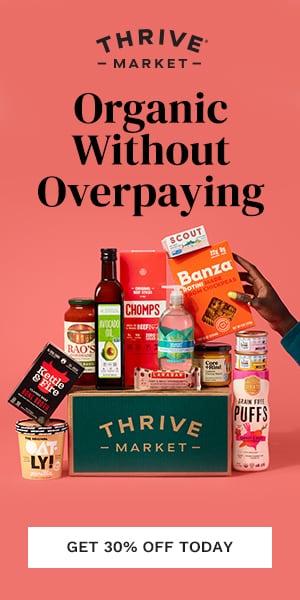How To Vote Toxin Free With Your Shopping Cart
Rising prices and food recalls have exposed the myriad challenges facing our global food system. Dr. David Wallinga of the Institute for Agriculture and Trade Policy discusses how to use our food dollars to improve our general nutritional health and forge a sustainable agricultural economy.
Signs of an emerging crisis: melamine in baby formula and candies; a rise in obesity and diet-related diseases; air and water pollution from factory farms; and the record-sized “Dead Zone” in the Gulf of Mexico, caused in large part by natural gas-derived corn fertilizers flowing from the Mississippi. And we are likely heading for more changes because our industrialized food system relies on costly and polluting fossil fuels, used intensively in the form of synthetic pesticides and fertilizers as well as for transporting food around the world.
Public confidence in our food system has also been shaken by the growing awareness that today, most healthy U.S. livestock and poultry receive human antibiotics or heavy metals in their feed. As a result, supermarket meat is often contaminated with bacteria resistant to multiple antibiotics or with arsenic residues. Consolidation of food production, processing and distribution in the hands of a few large entities exacerbates a number of food safety risks. And we have experienced a string of recalls due to contamination with melamine, heavy metals like mercury, or disease-causing bacteria like E. coli O157:H7 or Salmonella.
We have surveyed the food landscape and zeroed in on ten steps we can all take to steer our global food system in a more favorable direction.
1. Buy pesticide-free produce.
Produce from conventional, industrialized agriculture systems–where use of synthetic pesticides is routine–tend to have more pesticides compared to produce raised organically or under other, more sustainable systems. Data from the USDA’s Pesticide Data Program (PDP) show 90 percent or more of conventionally produced apples, peaches, pears and strawberries have pesticide residues; 2004 PDP data found at least 4 pesticides in 11 percent of fruits and vegetables tested. Pesticides are designed to be toxic to biological endpoints that are typically shared by humans and pests alike.
There is growing scientific consensus that even very small doses of pesticides can adversely affect people, especially during the vulnerable periods of in utero and early childhood development when organ systems are maturing most quickly, when toxic defenses are least established, and when early programming of risks for chronic disease later in life takes place. Exposure to pesticides is linked to chronic diseases including Parkinson’s Disease, child and adult cancers and neurodevelopmental harm. Dozens of pesticides are known or suspected to disrupt normal hormone function.
At present, government-certified or third-party certified food labels, like certified organic, are the best avenue for avoiding dietary exposure to pesticides. Recent studies suggest switching to an organic diet can eliminate residues of certain pesticides in children’s urine in just a few days. Switching to certified organic produce for the “dirty dozen”—the 12 domestic and imported fruits and vegetables most routinely contaminated–will greatly reduce one’s exposure to the 14 or so different pesticides typically found on conventionally grown produce on a given day, according to analysis by the Environmental Working Group.
2. Be a “locavore.”
Buy locally produced foods, when possible, to support the economic health of your local foodshed, and to help reduce “food miles.” The U.S. food production system accounts for an estimated 17 percent of the nation’s fossil fuel use.16 Truck-shipped produce in Chicago traveled an average of 1500 miles in 1998, according to Iowa State University. Buying local can reduce your carbon “foodprint.” Buying from the farmer (directly, on the internet, or via a Community Supported Agriculture program) allows you to know exactly where your food comes from and how it has been grown. Much non-certified, locally grown produce also uses few or no pesticides.
3. Know where your food comes from.
Our global, consolidated food system can make it hard to know exactly where your food comes from. A single hamburger patty can co-mingle meat from a hundred different head of cattle, from four different countries. Or, looked at from another perspective, a single contaminated carcass shredded for hamburger can pollute eight tons of finished ground beef. Given the huge size of many meat processing plants, a single package of ground beef can contain meat from hundreds of cows. In the Jack in the Box outbreak, investigators found that the ground beef from the most likely supplier contained meat from 443 different cattle that had come from farms and auctions in six states via five slaughterhouses. In July 2008, the USDA finally issued a rule requiring country of origin labeling of some food commodities. Beginning in September 2008 muscle cuts and ground beef (including veal), lamb, chicken, goat, pork; fresh and frozen fruits and vegetables; macadamia nuts; pecans, ginseng, and peanuts will be labeled for their country of origin.
4. Shop for safer, more sustainable fish.
Find fish good for you (high in healthful fats, low in environmental toxins), as well as good for the ocean. Fish are an important source of protein and omega-3 fatty acids. But overfishing and unsustainable fish harvesting practices have left many seafood species depleted or on the brink of extinction. Global dispersal of certain toxic pollutants—like PCBs or mercury—that persist in the environment and/or bio-accumulate in the food chain, make some larger, more predatory fish less safe to consume than others. This is especially true for pregnant woman and children. A huge body of research supports the importance of omega-3 fatty acids in the diet, American diets are highly deficient in omega-3 fats. People should neither avoid fish consumption, nor consume fish blindly. The most prudent approach for the health of our environment and the people in it is to eat safer,
less polluted fish species from sustainable fisheries.
5. Eat grass-fed meat and dairy products.
In recent decades, ruminants and other food animals have been moved from outdoors to indoors, and from grass and forage diets to feed composed primarily of grains. There is some evidence that animals fed grain-based diets are themselves less healthy, and produce meat and dairy products lower in omega-3 fatty acids and other beneficial fats. Eating food from grass-fed animals can address some of these concerns. The USDA’s 2007 voluntary standard for meat marketed as grass-fed precludes these animals from getting routine antibiotics. Antibiotics are used to promote growth as well as to compensate for the industrialized conditions that put these animals at greater risk of infection. About half of these feed antibiotics are from medically important classes, including penicillins, tetracyclines and erythromycins. Scientific consensus exists that these unnecessary agriculture antibiotics are helping create an epidemic of hard-to-treat (and sometimes untreatable) multi-drug resistant infections in humans.
6. Avoid chicken raised with arsenic.
Instead of conventional chicken, buy certified organic, which is arsenic-free, or from local producers who can assure arsenic was not used. In addition to routine antibiotics, at least 70 percent of conventionally raised broiler chickens in the U.S. are fed arsenic. The most common additive is roxarsone (3-nitro-4-hydroxyphenylarsonic acid). Roxarsone is an “organic” form of arsenic, once thought medically benign. Once ingested by animals, however, roxarsone can degrade into cancer-causing inorganic forms of arsenic (arsenite and arsenate) within the animal’s digestive tract and in animal waste. Roxarsone is FDA-approved for growth promotion, feed efficiency and “improved pigmentation” of meat. Significantly, the 27 countries of the European Union have never approved this practice as safe.
Meat from chickens fed arsenic can carry arsenic residues, only adding to a person’s risk of disease from arsenic exposure elsewhere in one’s diet and environment. The ultimate fate of 75 percent of the arsenic in U.S. poultry feed resides in the 26-55 billion pounds of chicken litter created annually, 90 percent of which is currently applied to fields and cropland as “fertilizer".
7. Buy dairy products from cows not given synthetic growth hormone (rBGH).
The FDA-required package insert for rBGH lists 17 adverse health impacts for cows treated with the hormone, including mastitis. Cattle treated with rBGH get more mastitis, and therefore receive more antibiotics, which contributes to antibiotic resistance. Animal and human health concerns have led most industrialized nations, including Canada, Australia, New Zealand, Japan and the European Union to ban rBGH use in dairy production.
IGF-1 is a growth factor found in both cows and humans. Increased IGF-1 levels in humans are associated with elevated risk for colon, breast, and prostate cancer. It is known that rBGH use raises IGF-1 levels in cows and milk. What remains unclear is whether drinking milk with higher IGF-1 levels will raise IGF-1 levels in humans. Given this uncertainty Health Care Without Harm–a global health coalition of 473 organizations in more than 50 countries–encourages health care providers to recommend non-rBGH dairy products.
8. Avoid plastic bottles and food packaging.
Most soft drinks, juice and water bottles are made of PETE (polyethylene terephthalate ethylene.) While these petroleum derived bottles are recyclable, the vast majority are thrown away. The plastic packaging in some cling wraps and squeeze bottles, cooking oil and peanut butter jars, is made from polyvinyl chloride (PVC) or #3 plastic. PVC often contains phthalates (pronounced "thAl-ates"), phthalic esters or benzenedicarboxylic acid esters, used primarily as plasticizers to make the PVC product soft and elastic. Since phthalates are not chemically bound to PVC polymer, they readily leach out of PVC products.
Phthalates act as hormone disruptors increasing the risk of reproductive damage and asthma. PVC manufacture and incineration produces dioxins, another hormone disrupting family of chemicals and a human carcinogen. As of 2008, new federal law bans six phthalates from children’s toys, but not from food wraps, lunch boxes, shower curtains, vinyl blinds or other vinyl products.
Concerns about hormone disruption have also been raised for bisphenol A, the chief chemical building block of polycarbonate, some #7 plastics, and epoxy resins. Clear plastic polycarbonate is found in many reusable water and baby bottles; bisphenol A is also found in the plastic liners of cans of tuna fish and infant formula. Bisphenol A is a synthetic estrogen, similar to diethylstilbesterol (DES), and has been found to leach from plastic containers into breast milk and other foods at levels known to cause harm.
9. Eat an anti-inflammatory diet to help prevent cancer and heart disease.
The anti-inflammatory diet has three major components. First aim for a diet rich in antioxidants by consuming 7-9 servings of fruits and vegetables per day. Second, try to find a better balance between your ingestion of omega-6 and omega-3 fatty acids. The average American probably eats 15 times more omega-6s than omega-3s; a more healthful balance is a ratio of between 2:1 and 4:1. To reach this balance, both boost your omega-3 intake, and shrink your consumption of beef, poultry, and processed foods high in soybean, safflower, corn and other oils rich in omega-6 fatty acids. Third, choose more complex, less processed carbohydrates to avoid spikes in blood sugars which ultimately lead to a pro-inflammatory cascade. These carbs are, for example, whole grain cereal grains and bakery products, rather than those from bleached grains or white flour.
10. Choose your foods wisely to prevent diseases linked to the toxic chemicals prevalent in our industrialized foods and farming systems.
Preferably eat whole, fresh foods. Minimize consumption of processed, refined and most fast food. And avoid partially hydrogenated oils–a source of trans fats–and high fructose corn syrup, both signs of low quality food.
Follow these ten steps and we not only improve our health, we send a strong signal to farmers, grocery stores, and policymakers as to the kinds of food we want to eat—at home, in our schools and in our hospitals. How we spend our food dollars can steer the future direction of our global food system in a healthier, more sustainable direction.
David Wallinga, M.D., is Director of the Food and Health Program at the Institute for Agriculture and Trade Policy.










